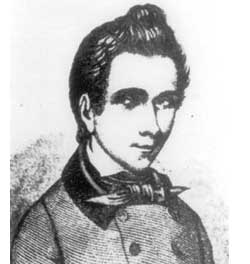Unless
you never touched a football in your life (that’s a _soccer-ball_
for those of you with an edu account) you will know that the world
championship in Germany starts tonight. In the wake of it, the field of
‘football-science’ is booming. The BBC runs its The
Science of Football-site and did you know the following?
Research indicates that watching such a phenomenon is not
only exciting, it can be good for our health too. The Scottish
researchers found that there were 14% fewer psychiatric admissions in
the weeks after one World Cup than before it started.
But, would you believe that some of the best people in the field
(Kostant and Sternberg to name a few) have written papers on the
representation theory of a football? Perhaps this becomes more plausible
when you realize that a football has the same shape as the buckyball aka Carbon60.
Because the football (or buckyball) is a truncated icosahedron, its
symmetry group is $A_5$, the smallest of all simple groups and its
representations explain some physical properties of the buckyball. Some
of these papers are freely available and are an excellent read. In fact,
I’m thinking of using them in my course on representations of finite
groups, nxt year. Mathematics and the Buckyball by Fan
Chung and Schlomo Sternberg is a marvelous introduction to
representation theory. Among other things they explain how Schur’s
lemma, Frobenius reciprocity and Maschke’s theorem are used to count the
number of lines in the infra red buckyball spectrum! The Graph of the
Truncated Icosahedron and the Last Letter of Galois by Bertram
Kostant explains the observation, first made by Galois in his last
letter to Chevalier, that $A_{5} = PSL_2(\mathbb{F}_5)$ embeds into
$PSL_{2}(\mathbb{F}_{11})$ and applies this to the buckyball.
In effect, the model we are proposing for C60is such that
each carbon atom can be labeled by an element of order 11 in PSl(2,11)
in such a fashion that the carbon bonds can be expressed in terms of the
group structure of PSl(2,11). It will be seen that the twelve pentagons
are exactly the intersections of M with the twelve Borel sub- groups of
PSl(2,11). (A Borel subgroup is any subgroup which is conjugate to the
group PSl(2,11) defined in (2).) In particular the pentagons are the
maximal sets of commuting elements in M. The most subtle point is the
natural existence of the hexagonal bonds. This will arise from a group
theoretic linkage of any element of order 11 in one Borel subgroup with
a uniquely defined element of order 11 in another Borel subgroup.
These authors consequently joined forces to write Groups and the
Buckyball in which they give further applications of the Galois
embeddings to the electronic spectrum of the buckyball. Another
account can be found in the Master Thesis by Joris Mooij called The
vibrational spectrum of Buckminsterfullerene – An application of
symmetry reduction and computer algebra. Plenty to read should
tonight’s match Germany-Costa Rica turn out to be boring…
